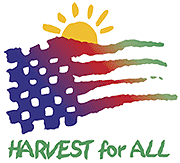For those involved with the planning and preparation for this year’s Nevada Farm Bureau Annual Meeting, you should be giving yourselves a big pat on the back for a great meeting! The Annual meeting, held the 16-19th of November, in Fallon, brought together Farmers and Ranchers and Agriculturists from across the state to tour various operations in Churchill County, to attend workshops, and to finalize our state Farm Bureau’s policy for the coming year.
This year we started out with Board training and dinner at the Slanted Porch in Fallon. Of course, I was too busy looking for my keys to have a chance to get my camera out and take any pictures, so you’ll just have to take my word for it. It was a great dinner and the training put on by Doug Busselman was also very well done. And, in the end, I also found my keys—and was not the only one to lose them that week—though I did receive the most ribbing for it.  |
| Farm Bureau Members headed to the Desert Oasis Teff Plant. |
The following day we began with more training from Doug. We then broke for lunch and then began the planned tours. Our first stop was at Desert Oasis Teff. Instead of telling you all about it myself, I found this article online, which does a much better job:
You really need to read that article to understand the basics of Teff, what it is used for and why it is becoming such an important crop in a world of increasing numbers with celiac's disease.
 |
| Jay Davison, UNCE Agent that helped introduce Teff to Nevada growers. |
Teff is harvested with a few manipulations to regular machinery. The swather has been adapted to have as large as a swath as possible to dry the teff qucikly. A combine is sealed as much as possible, even using duct tape to cover any minor holes to keep the tiny seed from being lost.
  |
| This is what they use to spread the tiny seed with, and have had success in flood and sprinkler irrigation systems. |
 |
| Teff before cleaning. |
This is just the chaff left after the first cleaning.
 |
| Dave Eckert and John Getto, owners of Desert Teff. |
 |
| The seed as it prepares for further cleaning and processing. |
 |
| Here it is again processed, and the different sizes of seeds and colors of seed are separated. |
 |
| The darker seeds are more preferred in the Ethiopian Market because they can mix them with regualr flour and it is not as noticeable. |
 |
| The final sorting of the Teff. |
 |
| The final cleaned seed, like grains of sand. |
 |
| Gluten-free Teff flour, ready for use. |
And, that is all you gert for this post, which I am pretty proud of myself for even having gotten out during this crazy week! Tune in for the rest of the tour to Liberty Dairy and Churchill Vineyards, hopefully next week. But, for now: HAPPY THANKSGIVING TO YOU ALL!!







